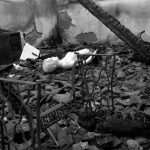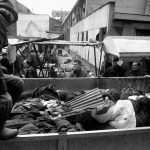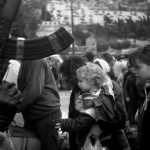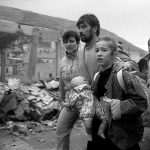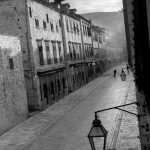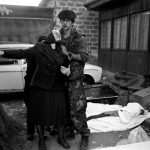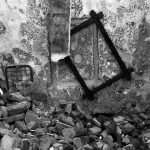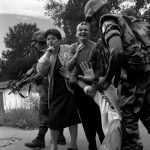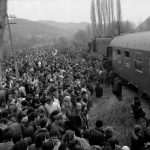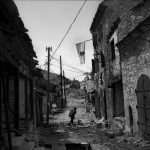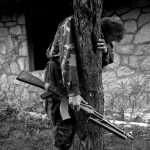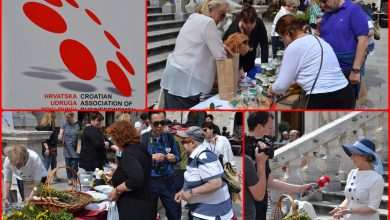Broken Lights of Yugoslavia, a war photo exhibition opened in August in War Photo Limited Gallery in Antuninska Street located in the historical nucleus. In 1991, its author, Emmanuel Ortiz, was a war photographer in Dubrovnik area. Until 1999 he followed the fights in the region of former Yugoslavia, reporting for many papers such as the Washington Post, the New York Times and the Los Angeles Times. The exhibition in Antuninska Street presents three photos from Dubrovnik in war as well as his photos from other former Yugoslav countries in war.
We visited the gallery on the occasion of Emmanuel Ortiz’s arrival to Dubrovnik. This is his first visit to the city after the Homeland War.
– I spent three weeks in Dubrovnik. I arrived on the same day as Stjepan Mesić. I remember the shortage of water and food; it was very hot. I stayed in Hotel Petka in Gruž. Every day I went to Old Town on foot. On the way there an Alsatian followed me every day. Then it disappeared, said Ortiz.
– I arrived to Croatia in July, right after visiting Slovenia. I planned to stay for a month and arrived with 100 USD in my pocket. Eventually, I stayed for 9 years. I was in Croatia, Bosnia, Albania, Macedonia, and Kosovo. The war brought losses to all. Obviously there was no other way. But people suffered a lot and suffering is not fair. It all ended up in hatred and brought nothing good, commented Ortiz.
His first impression of Dubrovnik today is that it is full of people, which was not the case back then:
-At that time it was empty, everyone was in shelters and in houses. I have to get used to it, but I assumed it would be like that, he concluded.
Emmanuel Ortiz was born in Argentina in 1961. In 1978, he moved to France where he started his career of a photographer in 1982. In 1984, he went to Peru to follow the conflict between the Peruvian military government, a Maoist guerrilla movement the Shining Path and a Marxist revolutionary group MRTA that fought both the Peruvian government and the Shining Path.
In the same period, Emmanuel covered the events that followed the development of the young democracy in Argentina, mass hunger strikes in Bolivia in 1986 and the visit of Pope John Paul II to Santiago in Chile.
After his return to France in 1991, Emmanuel covered the beginning of the war in Croatia where he fell in love with the region and stayed to cover the conflicts that followed the fall of Yugoslavia until 1999.
After that, Ortiz spent a year in Thailand and returned to France in order to cover the long-term story of everyday life of French fishermen on the Atlantic coast. In 2005, he started another long-lasting project which was also his passion – horses, their return to modern living and the history of their relationship to humankind.




